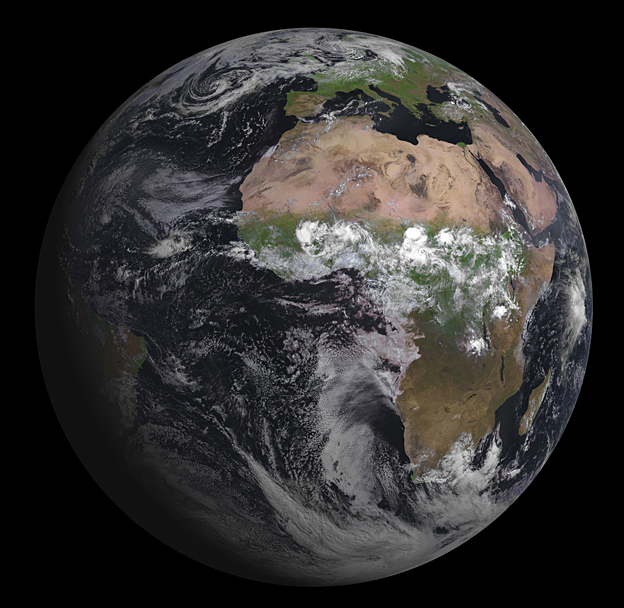 |
| From the European Space Agency |
New York, N.Y. : Penguin Books, 2013.
306 p. : ill. ; 21 cm.
I love a good science book, and this one did not disappoint. As Nancy Curtis of Library Journal writes, "Hazen has a gift for explaining science in lay terms." He is able to convey a lot of rather intricate and tricky scientific knowledge and concepts about the formation of the earth and its features, but in ways that get the reader to visualize and contemplate the vast changes that our planet has undergone. His book helps explain the way in which earth's familiar geology is intricately tied up with the existence of life - in other words, without life, the earth would be a very different place geologically. Specifically, Hazen posits that most of the minerals found on earth would not exist without the chemical changes in the land, oceans, and atmosphere that life sets in motion.
For me the most exciting part of reading The Story of Earth is how it provokes thinking and imagining the nearly incomprehensible stretches of time that make up both earth's history (that 4.5 billion years) and its future (about another 4 billion years). I think I must be like most humans and feel that a lifetime of 75-100 years is a long time, or that ancient history (human, that is!) 2,000-3,000 years in past is immense. But the extent of deep time really is breathtaking - the thought that life was present by the 1 billionth year of earth's existence and yet carried on for another billion year before getting the knack of photosynthesis is really incredible. Of course it was the recognition of deep time that helped Darwin see the potential for truly radical changes of organisms - given only minute changes at any one time.
I will definitely be recommending this book for any students looking for a good science read.

No comments:
Post a Comment